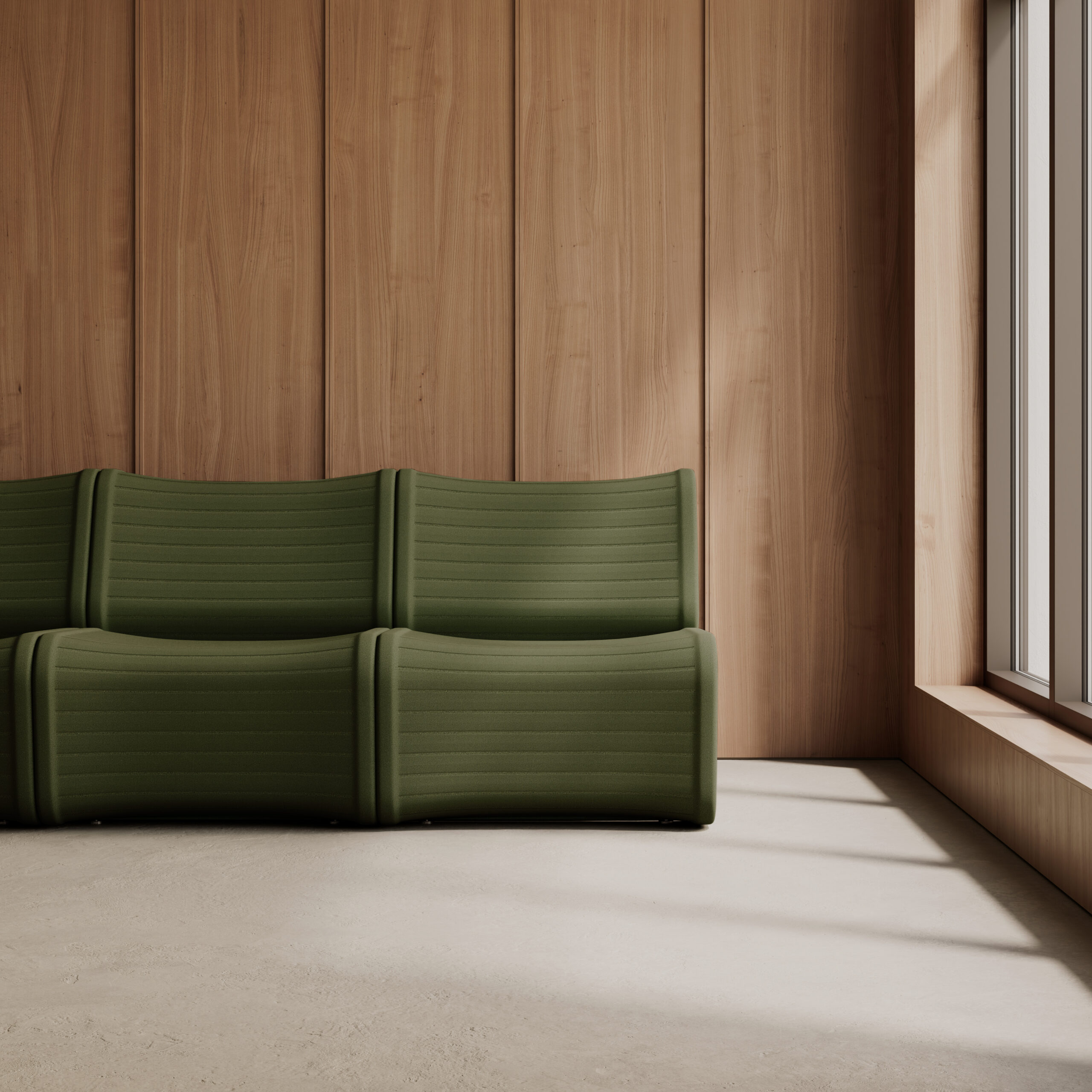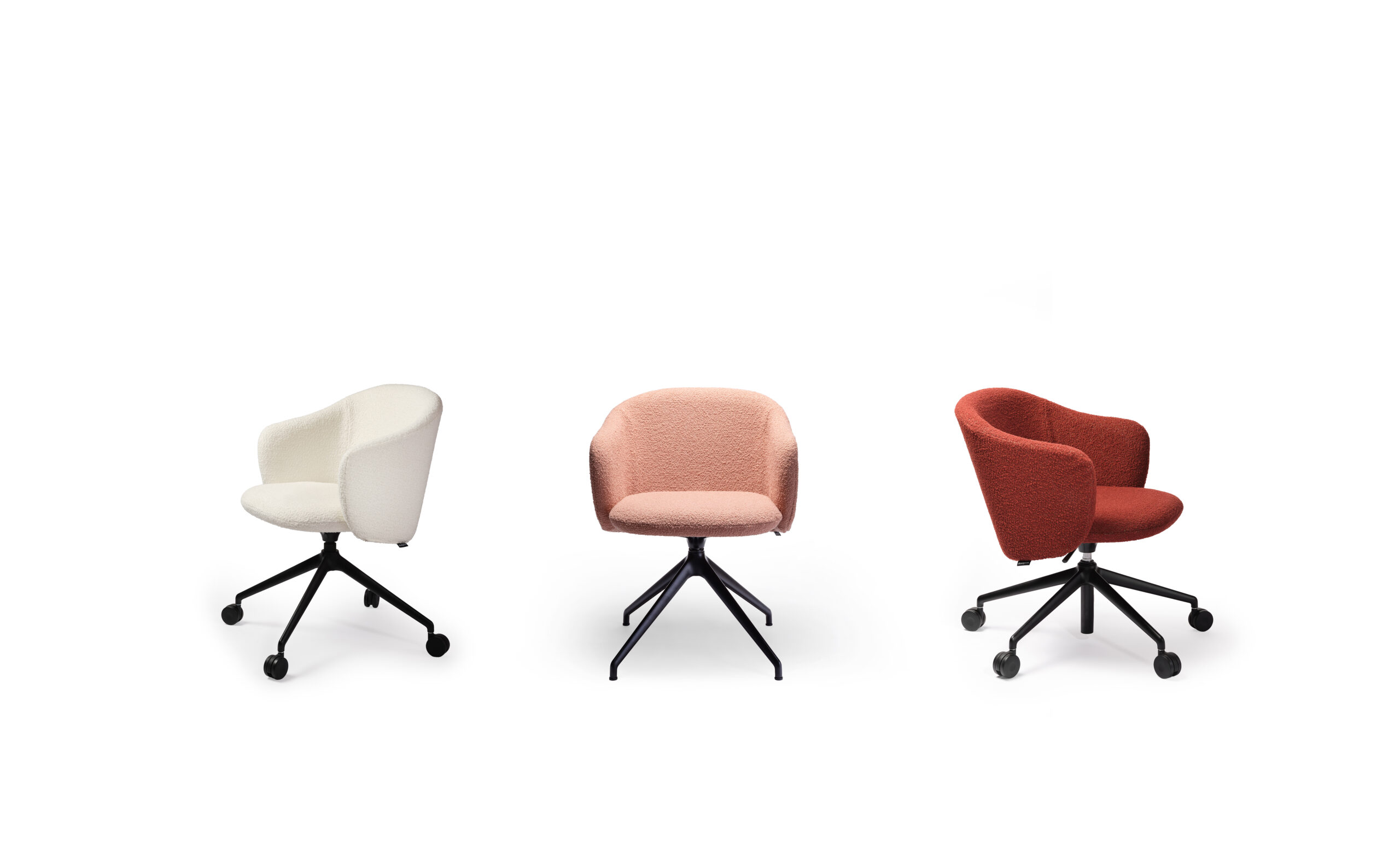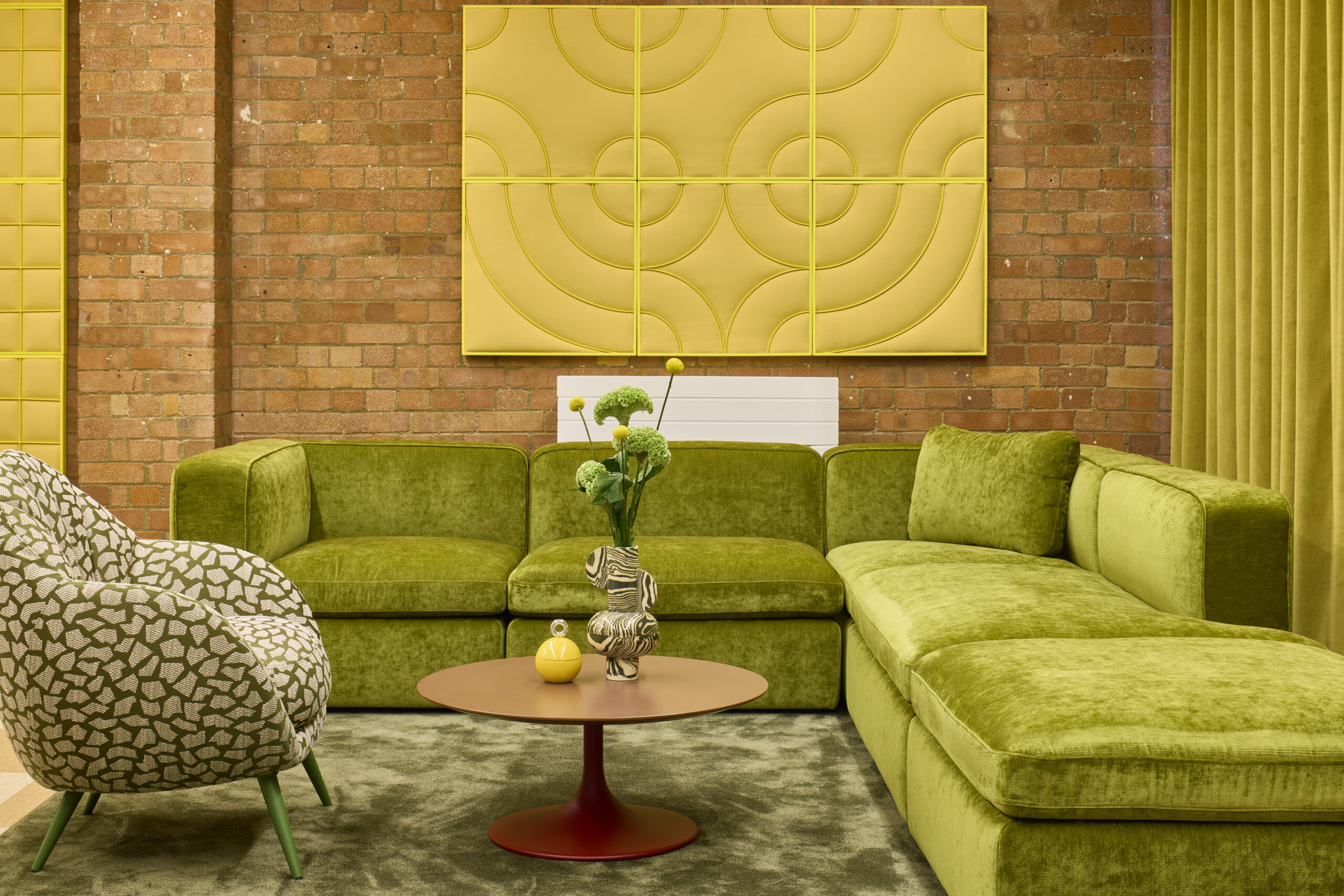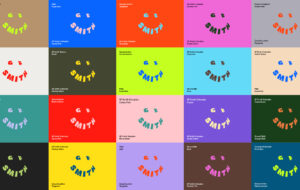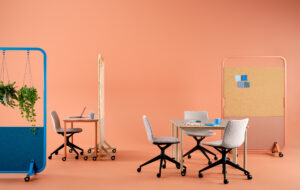 Combiwerk’s central “career square”, a multifunctional open space|Second-hand chairs, each one different, represent workers’ individuality|Desks and storage were all custom-designed|VMX’s giant skate ramp – part warehouse, part training centre|”We wanted a special place to show off, but it also had to be modest”||
Combiwerk’s central “career square”, a multifunctional open space|Second-hand chairs, each one different, represent workers’ individuality|Desks and storage were all custom-designed|VMX’s giant skate ramp – part warehouse, part training centre|”We wanted a special place to show off, but it also had to be modest”||
VMX and i29 used bold colors, bespoke furniture and raw materials to create a stand-out space for Combiwerk
Our view of disability has changed immeasurably over the centuries. In medieval times, it was regarded as divine retribution for some heinous transgression. Later, the Victorians deemed the afflicted dangerous, the safest course of action being to lock people in asylums. (There were a few enlightened exceptions – at the Normansfield Hospital, Victorian founder Dr John Langdon proposed education and activity as treatment rather than restraint and castigation, even building a theatre for his patients.)
It was not until after the second world war, when wounded or traumatised soldiers demanded better pensions, that society at large began to try to understand and accommodate disability, rather than hiding it away. Today, fringe groups or minorities are far more likely to be absorbed into mainstream society.
And so to VMX Architects’ new headquarters for Combiwerk, a private training company where the physically and mentally impaired work – in packing, or assembly, for example – and are coached for entering the job market.
The building, a shiny steel skate-ramp on the outskirts of Delft, is quietly sculptural, featuring a scalloped roof curving gently to meet precise rectangular facades.
“It was our intention to show a glamorous building,” says says VMX’s Leon Teunissen, the project architect. He adds that Combiwerk’s trainees “can have an inferiority complex, so it was important to have somewhere they could be proud of.”
To describe it as glamorous might be stretching it a little, but the steel framed and clad building is certainly well-thought-out – housing a contrasting blend of factory, offices, training and job centre. It is generous, too, with an abundance of natural light thanks to a pair of skylights. At the building’s heart are two indoor gardens that allow the occupants to take a break from daily tasks and relax in privacy.
“It is a reference to people being pigeonholed or boxed-in, in an abstract way”
Three floors of offices populate the building’s northern elevation while storage and deliveries are contained at the opposing end, judiciously dividing people and trucks.
The result is an expansive open-plan floor for the workers. Showing commendable forethought, VMX drafted in interior designers i29 at the project’s construction stage to ensure that the building was workable from the inside out.
The collaboration proved successful, with i29’s designers immediately grasping the need for an inspirational but serious workplace that avoided speaking down to its prospective occupants.
“We wanted to put together something of quality and maybe even to be able to empower maybe, to add some brilliance to it,” explains Jasper Jansen, one of i29’s two directors.
In contrast to its previous work, the monochrome Office 03 (onoffice 58), the studio created rhomboid, coloured zones dotted across the ground floor space demarcating the various activities that take place within. The different areas appear as colourful islands in a grey ocean of floor, ceilings and walls. It not only gives the space clear navigation, but (just) prevents it from sailing into the realms of playgroup.
The zones feature different hues within the same palette, adding a certain nuance to the look and feel of the place.
“It is a reference to people being pigeonholed or boxed-in, in an abstract way,” says Jansen.
The office begins with exclamatory deep-red splashes in each of the two reception areas. Some workers get around on mobility scooters, so the architects constructed a miniature car park, made from rectangular blocks of high-pressure laminate (HPL). The building’s soul is the central atrium where the restaurant (the green zone), the career square (the blue zone) and the reception are located with more formal offices (the orange zone) on the first floor.
Dividing and defining the space is custom-made furniture (storage, walls and desks) designed by i29. The grid-like structures separate the zones in a more physical sense and dissolve the scale of the 4,000sq m floorplate.
“Sometimes with larger projects it can be financially better get things custom-made because you go straight to the factory”
A key element of Combiwerk’s remit is to unlock the world of work for their clients, and so, by way of encouragement, those that “make it” are displayed on a grid in the job forum zone.
Jansen reckons that going down the bespoke route shaved a few digits from the bill: “When you buy furniture for a property you have all the layers in between. Sometimes with larger projects it can be financially better get things custom-made because you go straight to the factory.”
Although the designs were unique, the raw materials were off the shelf, which Jansen concedes made it trickier to achieve the right colour spectrum, adding that it would also have been inappropriate to be too flashy: “On one hand we wanted a special place that we wanted to show off, but on the other it had to be modest. It isn’t about ‘look at us; we’re spending a lot of money.’”
The architects found themselves doubling as behavioural psychologists, conducting a series of interviews with Combiwerk which revealed that its clients were upset by change.
Searching for a sense of stability, i29 retained some of the furniture from the firm’s previous office, which were restored by Weder, another company specialising in working with disabled people. A further 250 wooden chairs – an eclectic mix picked up on eBay and at second-hand shops – were also restored by Weder, their individuality meant as an analogy for the unique characters found at Combiwerk. Each chair has been stripped down to its original untreated state so as not to compete with the colourful islands.
“The funny thing is we were a little bit afraid it was getting too much, but a lot of this neutrality absorbs that colour,” says Janesen. “ You wouldn’t think it but it turned out to be very peaceful in a way. It has balance.”




